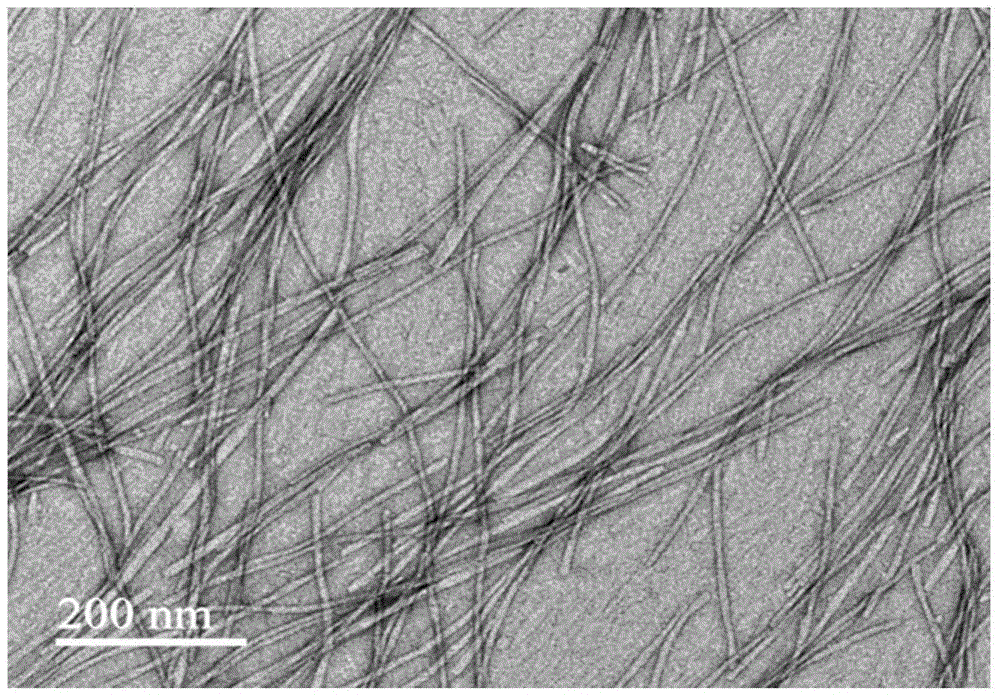A kind of hydrogel that can be used for cell adhesion and preparation method thereof
A hydrogel and cell technology, applied in medical science, prosthesis, etc., can solve the problems of poor biocompatibility, damage to cells and tissues, and weak mechanical properties of hydrogels, and achieve easy control of synthesis conditions and biophase Good capacitance and low synthesis cost
- Summary
- Abstract
- Description
- Claims
- Application Information
AI Technical Summary
Problems solved by technology
Method used
Image
Examples
Embodiment 1
[0073] The preparation method of the hydrogel of the present invention specifically includes the following steps:
[0074] The Ac-IIISLGK-NH prepared above 2 It is mixed with L-glutamine in a molar ratio of 1:1 and synthesized under enzymatic reaction conditions. In enzymatic reaction, Ac-IIISLGK-NH 2 The final concentration of the solution is 7.27 mM, the concentration of glutaminase TG is 0.9 U / mL, and the temperature is controlled at 37° C. for 24 hours to obtain a hydrogel.
[0075] Test: Pipette 10μL of hydrogel sample dropwise on the surface of new mica sheet, after static adsorption for 10s, dry the sample with high-purity nitrogen, scan by AFM, take a complete hydrogel and place it on the surface of the sealing film, which will have a carbon film The 400-mesh copper mesh is covered on the gel and adsorbed for 1 min. After removing the copper mesh, use filter paper to absorb the residual liquid around the copper mesh, stain with 2% uranyl acetate for 1 min, and absorb the res...
Embodiment 2
[0077] The preparation method of the hydrogel of the present invention specifically includes the following steps:
[0078] Put 500μLAc-IIISLGK-NH 2 (16mM) and L-Q (16mM) mixed solution left at room temperature for 24 hours, add 25μL TG solution and the same amount of Ca 2+ After mixing the dependent solution thoroughly, place it in a 37°C water bath for 24 hours to obtain a hydrogel.
[0079] The mechanical strength test of the hydrogel: The Hacker rheometer was used to characterize the mechanical properties (viscoelasticity) of the gel formed by the transglutaminase-catalyzed hydrogel. The measurement module used was a cone with a diameter of 35mm and a taper of 2°. Plate and corresponding sample table, each measurement sample volume is 500μL, rheological experiment temperature is 25℃, after 24h of transglutaminase catalyzed sample reaction, stress scanning is performed at a frequency of 1Hz, and the scanning range is 0.01%-100%. Measure the linear viscoelastic zone of the gel, se...
Embodiment 3
[0088] The preparation method of the hydrogel of the present invention specifically includes the following steps:
[0089] The Ac-IIISLGK-NH prepared above 2 It is mixed with L-glutamine in a molar ratio of 1:1 and synthesized under enzymatic reaction conditions. In enzymatic reaction, Ac-IIISLGK-NH 2 The final concentration of the solution was 16 mM, the concentration of TG was 0.9 U / mL, and the temperature was controlled at 38°C for 36 hours to obtain a hydrogel.
PUM
 Login to View More
Login to View More Abstract
Description
Claims
Application Information
 Login to View More
Login to View More - R&D Engineer
- R&D Manager
- IP Professional
- Industry Leading Data Capabilities
- Powerful AI technology
- Patent DNA Extraction
Browse by: Latest US Patents, China's latest patents, Technical Efficacy Thesaurus, Application Domain, Technology Topic, Popular Technical Reports.
© 2024 PatSnap. All rights reserved.Legal|Privacy policy|Modern Slavery Act Transparency Statement|Sitemap|About US| Contact US: help@patsnap.com










